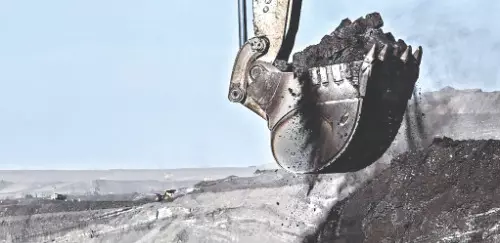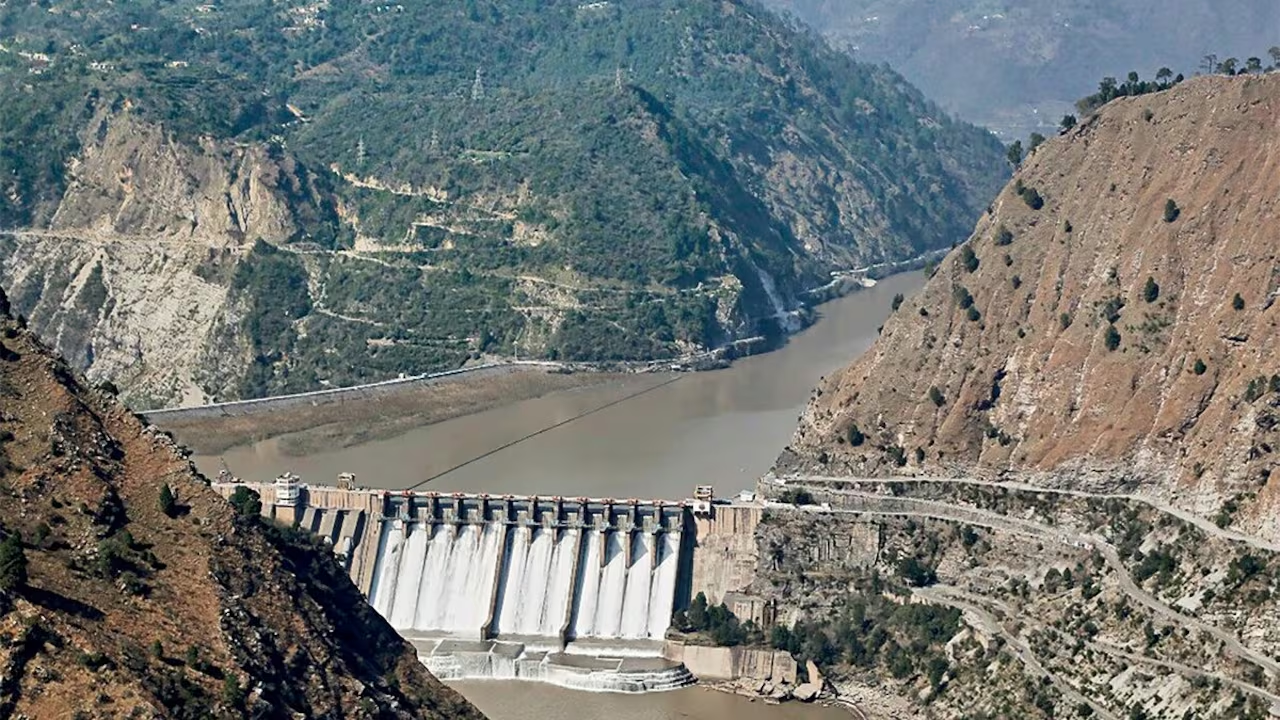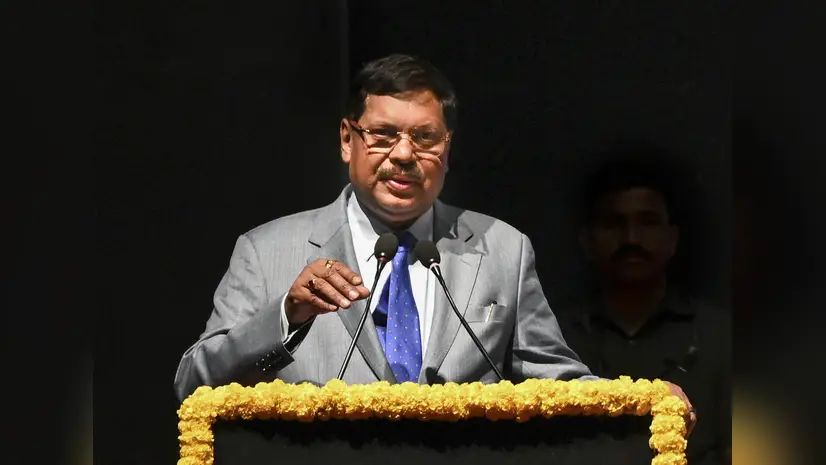- Courses
- GS Full Course 1 Year
- GS Full Course 2 Year
- GS Full Course 3 Year
- GS Full Course Till Selection
- Answer Alpha: Mains 2025 Mentorship
- MEP (Mains Enrichment Programme) Data, Facts
- Essay Target – 150+ Marks
- Online Program
- GS Recorded Course
- Polity
- Geography
- Economy
- Ancient, Medieval and Art & Culture AMAC
- Modern India, Post Independence & World History
- Environment
- Governance
- Science & Technology
- International Relations and Internal Security
- Disaster Management
- Ethics
- NCERT Current Affairs
- Indian Society and Social Issue
- NCERT- Science and Technology
- NCERT - Geography
- NCERT - Ancient History
- NCERT- World History
- NCERT Modern History
- CSAT
- 5 LAYERED ARJUNA Mentorship
- Public Administration Optional
- ABOUT US
- OUR TOPPERS
- TEST SERIES
- FREE STUDY MATERIAL
- VIDEOS
- CONTACT US
Crossing 1 Billion Tonnes: Coal’s Role in India’s Energy Future
Crossing 1 Billion Tonnes: Coal’s Role in India’s Energy Future

Introduction
India marked a historic milestone by surpassing 1 billion tonnes of coal production for the first time on March 20, 2025, during the fiscal year 2024–25. This achievement not only eclipses the previous year's output of 997.83 million tonnes but also demonstrates a substantial boost in domestic production, driven by the concerted efforts of public sector undertakings, private miners, and strategic policy reforms.
Importance of Coal for India’s Energy Security
1. Electricity Generation and Base-load Stability
- Coal accounts for nearly 74% of India’s electricity generation and about 55% of total primary energy consumption.
- Out of the total 442 GW installed capacity (as of FY24), approximately 216 GW (49%) comes from coal-based thermal plants.
- Coal-fired power provides base-load electricity, delivering uninterrupted, round-the-clock energy essential for both rural and urban consumption, especially during high demand or intermittent renewable supply.
2. Reduced Import Dependence
a) Increased domestic coal production reduces exposure to volatile international markets.
b) Between April and December 2024:
• Coal imports declined by 8.4%
• Foreign exchange savings reached USD 5.43 billion (₹42,315.7 crore)
3. Economic Contribution and Industrial Use
- The coal sector provides direct employment to around 5 lakh people across 350+ operational mines, supporting livelihoods and economic activity in key mining states.
- Coal is also a vital input for several core industries:
• Steel (via coking coal in blast furnaces)
• Cement, fertilizers, aluminum, and heavy manufacturing
• Railways, where Indian Railways remains one of the largest coal consumers
4. Strategic Role in Energy Transition
- While India aims to install 500 GW of non-fossil capacity by 2030, coal remains critical to ensure energy reliability during this transition.
- According to the International Energy Agency (IEA, 2023), India is expected to register the largest increase in energy demand globally by 2040, reinforcing coal’s transitional importance even as clean energy adoption accelerates.
Policy Reforms That Enabled Production Growth
1. Introduction of Commercial Coal Mining
- In 2020, the Government of India launched commercial coal mining auctions, allowing private companies to mine coal without end-use restrictions.
- This reform ended decades of state monopoly and aimed to improve competitiveness, efficiency, and output.
2. MMDR Act Amendments
- The Mines and Minerals (Development and Regulation) Amendment Act, 2021 introduced critical changes:
• Removal of end-use restrictions on mining
• Easier transfer of statutory clearances
• Reallocation of cancelled coal blocks - These amendments enabled faster onboarding of new players and better utilization of existing assets.
3. Single-Window Clearance Mechanism
- A Single Window Clearance portal was launched to streamline over 20 statutory approvals needed for coal mining operations.
- This reduced delays in operationalizing newly auctioned coal blocks and improved investor confidence
4. Auction Reforms and Revenue-Sharing Model
- The government shifted to a revenue-sharing model from the earlier fixed royalty system to encourage greater participation.
- The launch of the National Coal Index (NCI) provided market-linked price benchmarks, enhancing transparency.
5. Production and Evacuation Infrastructure
- Massive investment was made in logistics and evacuation systems, including:
• Dedicated rail corridors for coal movement
• Mechanized loading and conveyor belt systems at pitheads - These infrastructure upgrades reduced bottlenecks and helped scale up dispatch volumes in real time.
Environmental Considerations:
1. Environmental Impact of Coal Mining and Usage
- Coal mining and combustion are major contributors to greenhouse gas emissions, air pollution, land degradation, and water contamination.
- India's domestic coal has high ash content and relatively low calorific value, making it less efficient and more polluting than many imported grades
- Surface mining also leads to significant forest loss, biodiversity disruption, and displacement of communities.
2. Sustainability Measures by the Government and PSUs
- The Ministry of Coal and Coal India Ltd have initiated several eco-restoration and mine reclamation programs for degraded and abandoned mine areas.
- Efforts include:
• Afforestation drives on mined-out lands
• Drone-based monitoring and real-time dust suppression systems
• Development of green belts and bio-remediation zones around coalfields - As of 2024, over 300 abandoned or closed mines have been identified for phased reclamation
3. Clean Coal Technologies and Transition Efforts
- The government is promoting cleaner coal technologies to reduce environmental load:
• Coal gasification and underground coal gasification (UCG)
• Supercritical and ultra-supercritical thermal power units
• Carbon capture, utilization, and storage (CCUS) pilot projects - A policy framework to scale up coal-to-chemicals and methanol production is under consideration to reduce emissions intensity per tonne of coal used.
4. Alignment with Climate Commitments
- India has committed to achieving Net Zero emissions by 2070 and increasing non-fossil energy capacity to 500 GW by 2030 (COP26, Glasgow).
- Sustainable coal practices are positioned as a transitional bridge, not a long-term reliance, in India’s broader low-carbon pathway.
Way Forward
India’s coal sector must now transition from high-volume production to high-efficiency, low-emission performance. This requires targeted action on multiple fronts:
- Accelerate environmental restoration by fast-tracking reclamation of abandoned and degraded mines, supported by real-time monitoring and ecological assessments.
- Invest in clean coal technologies, including large-scale adoption of coal gasification, carbon capture and storage (CCUS), and supercritical power units to reduce emissions intensity.
- Enhance productivity and safety through automation, digital surveillance, and mechanized loading and evacuation systems.
- Promote circular economy practices, including coal beneficiation and by-product utilization, to reduce waste and improve resource efficiency.
- Ensure regulatory compliance through stronger environmental enforcement, third-party audits, and integration of sustainability metrics into coal block operations.
A forward-looking coal policy must balance energy security with ecological integrity, while preparing for a long-term transition towards cleaner energy sources.
Conclusion
- The achievement of 1 billion tonnes of coal production in FY 2024–25 represents a major milestone in India’s energy and industrial journey. It demonstrates the impact of bold policy reforms, operational coordination, and increased institutional capacity.
- However, this milestone also underscores the need for responsible resource management. As India progresses toward its Net Zero by 2070 target and prepares for growing energy demand, coal must evolve from being a polluting necessity to a controlled and optimized resource.
- Coal will continue to play a critical, though diminishing, role in India's energy mix. Its future must be anchored in efficiency, innovation, and sustainability — ensuring that economic gains do not come at the cost of environmental degradation.
Major Coal-Producing States and Coalfields
|
|
State |
Major Coalfields |
Production (in Million Tonnes) |
PSU |
|
Jharkhand |
Jharia, North Karanpura, Rajmahal |
167.22 MT |
CCL, ECL, BCCL |
|
Chhattisgarh |
Korba, Mand Raigarh, Hasdeo-Arand |
163.43 MT |
SECL |
|
Odisha |
Talcher, Ib Valley |
156.58 MT |
MCL |
|
Madhya Pradesh |
Singrauli, Sohagpur, Pench-Kanhan |
116.74 MT |
NCL, WCL |
|
Telangana |
Godavari Valley (Ramagundam, Kothagudem) |
67.14 MT |
SCCL |
|
Maharashtra |
Wardha Valley, Kamptee |
49.78 MT |
WCL |
|
West Bengal |
Raniganj, Birbhum |
30.24 MT |
ECL |
|
Also Read |
|
| FREE NIOS Books | |




